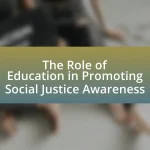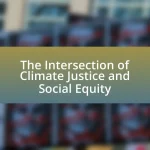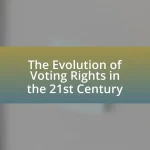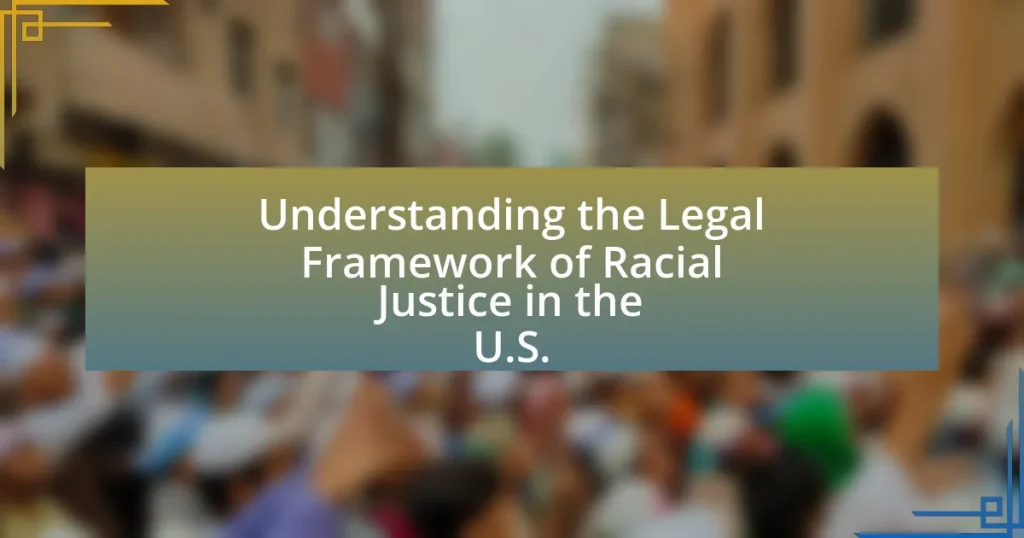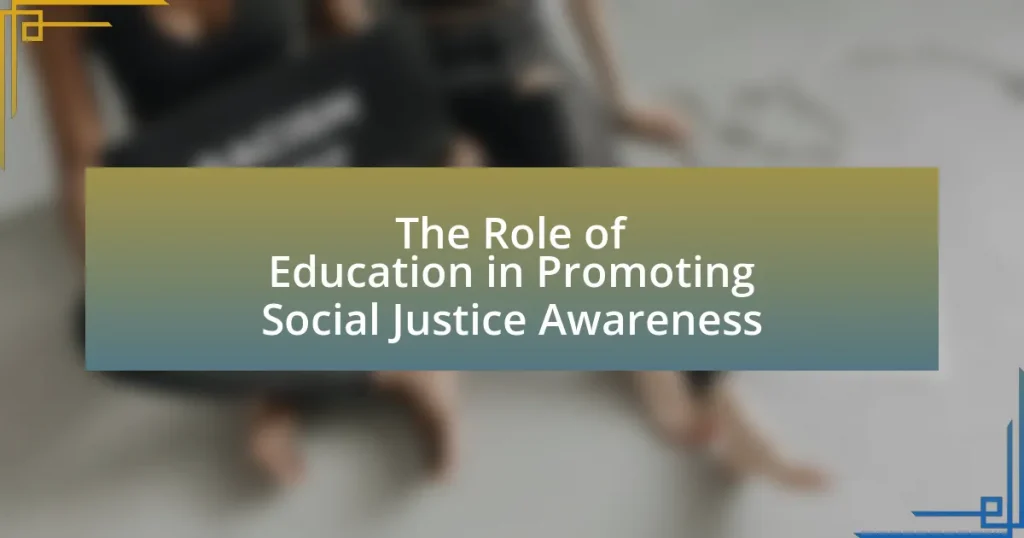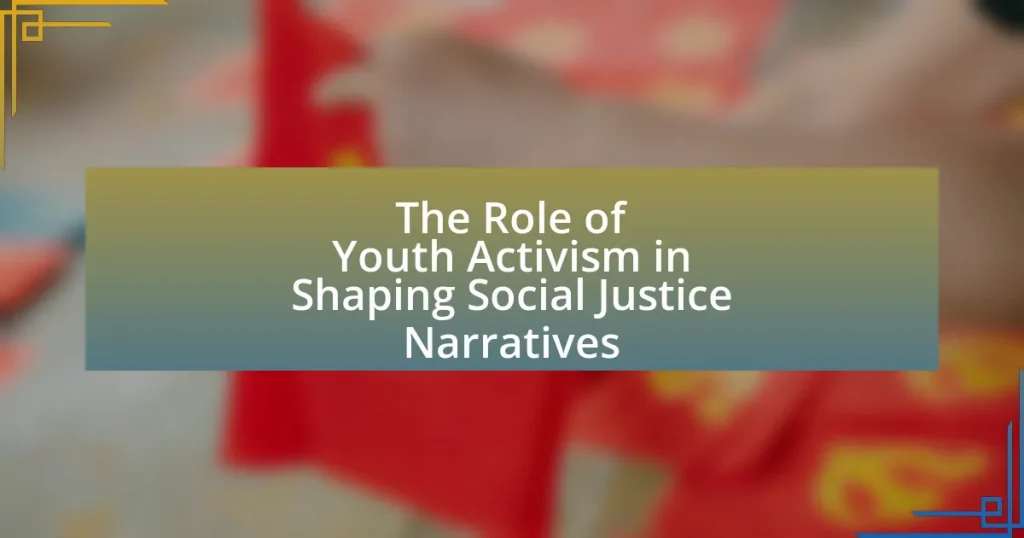Global Civil Rights Movements encompass organized efforts advocating for individual rights and freedoms worldwide, addressing issues such as racial equality, gender rights, and social justice. This article examines the evolution of these movements, highlighting historical events that shaped them, such as the American Civil Rights Movement and the anti-apartheid struggle in South Africa. It also explores the influence of cultural contexts, the characteristics and common goals of these movements, and the challenges they face, including systemic oppression and political resistance. Additionally, the article discusses the importance of comparative studies in understanding the interconnectedness of civil rights issues globally and the strategies that have proven effective in advancing social justice.
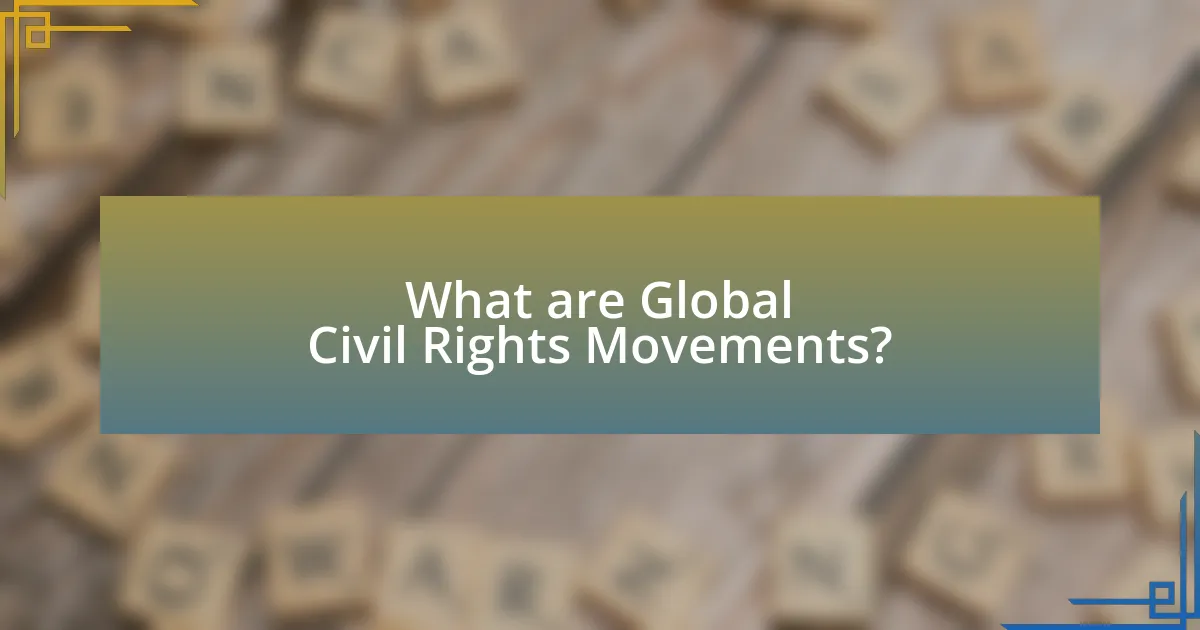
What are Global Civil Rights Movements?
Global Civil Rights Movements are organized efforts advocating for the protection and advancement of individual rights and freedoms on a worldwide scale. These movements address issues such as racial equality, gender rights, and social justice, often mobilizing diverse groups to challenge systemic discrimination and promote legal reforms. Historical examples include the American Civil Rights Movement of the 1960s, which aimed to end racial segregation and discrimination against African Americans, and the global LGBTQ+ rights movement, which seeks to secure equal rights for individuals regardless of sexual orientation. These movements have significantly influenced legislation and public policy, demonstrating their impact on societal change and human rights advancements globally.
How have Global Civil Rights Movements evolved over time?
Global civil rights movements have evolved from localized struggles for equality to interconnected global campaigns addressing a wide range of social justice issues. Initially, movements such as the American Civil Rights Movement in the 1950s and 1960s focused on racial segregation and discrimination, exemplified by the efforts of figures like Martin Luther King Jr. and landmark legislation like the Civil Rights Act of 1964. Over time, these movements expanded to include diverse issues such as gender equality, LGBTQ+ rights, and environmental justice, reflecting a broader understanding of human rights.
The rise of technology and social media has further transformed these movements, enabling rapid dissemination of information and mobilization of support across borders. For instance, the Black Lives Matter movement, which gained prominence in the 2010s, utilized social media platforms to raise awareness about police brutality and systemic racism, influencing global protests and discussions on racial justice. This interconnectedness highlights how civil rights movements now often draw inspiration from one another, creating a more unified global approach to advocating for human rights.
What historical events have shaped these movements?
The historical events that have shaped global civil rights movements include the American Civil Rights Movement of the 1950s and 1960s, which was significantly influenced by the 1954 Supreme Court decision in Brown v. Board of Education that declared racial segregation in public schools unconstitutional. This landmark ruling galvanized activists and led to pivotal events such as the Montgomery Bus Boycott in 1955 and the March on Washington in 1963, where Martin Luther King Jr. delivered his famous “I Have a Dream” speech. Additionally, the anti-apartheid movement in South Africa, marked by the Sharpeville Massacre in 1960 and the subsequent rise of leaders like Nelson Mandela, highlighted the global struggle against racial oppression. The Stonewall Riots of 1969 also played a crucial role in shaping LGBTQ+ rights movements, emphasizing the fight for equality and justice. These events collectively illustrate the interconnectedness of civil rights struggles across different contexts, demonstrating how specific historical moments have catalyzed broader movements for social justice and equality.
How do cultural contexts influence the development of civil rights movements?
Cultural contexts significantly influence the development of civil rights movements by shaping the values, beliefs, and social norms that drive collective action. For instance, in the United States during the 1960s, the civil rights movement was deeply rooted in the African American community’s historical experiences of oppression and the cultural significance of freedom songs and religious gatherings, which mobilized individuals and fostered a sense of unity. Similarly, in South Africa, the anti-apartheid movement was influenced by the cultural heritage of resistance among various ethnic groups, which was expressed through art, music, and community organizing, ultimately leading to widespread activism against racial segregation. These examples illustrate how cultural contexts provide the framework within which civil rights movements emerge, evolve, and gain momentum, as they resonate with the lived experiences and aspirations of the affected populations.
What are the key characteristics of Global Civil Rights Movements?
Global Civil Rights Movements are characterized by their focus on social justice, equality, and the protection of human rights across diverse populations. These movements often employ nonviolent resistance, grassroots organizing, and coalition-building to challenge systemic discrimination and advocate for legislative changes. Historical examples include the American Civil Rights Movement, which sought to end racial segregation and discrimination, and the anti-apartheid movement in South Africa, which aimed to dismantle institutionalized racial oppression. The effectiveness of these movements is often supported by widespread public engagement, media coverage, and international solidarity, demonstrating their global impact and relevance in promoting civil rights.
What common goals do these movements share?
Global civil rights movements share the common goals of achieving equality, justice, and the protection of human rights for marginalized groups. These movements aim to dismantle systemic discrimination and promote social change through advocacy, legislation, and grassroots activism. For instance, the Civil Rights Movement in the United States sought to end racial segregation and discrimination against African Americans, while the anti-apartheid movement in South Africa aimed to abolish racial oppression and establish democratic governance. Both movements highlight the universal struggle for dignity and equal treatment, demonstrating a shared commitment to fostering inclusive societies.
How do strategies and tactics differ among various movements?
Strategies and tactics differ among various movements primarily based on their goals, contexts, and the sociopolitical environments in which they operate. For instance, the Civil Rights Movement in the United States employed nonviolent resistance and legal challenges to combat racial segregation, exemplified by events like the Montgomery Bus Boycott and the March on Washington. In contrast, the Black Lives Matter movement utilizes social media for rapid mobilization and awareness, focusing on contemporary issues of police violence and systemic racism. Additionally, the LGBTQ+ rights movement has varied its tactics over time, from early protests and legal battles to more recent advocacy for marriage equality and anti-discrimination laws, reflecting shifts in societal attitudes and legal frameworks. These differences illustrate how movements adapt their strategies and tactics to effectively address their unique challenges and objectives within their specific historical and cultural contexts.
Why is a comparative study of Global Civil Rights Movements important?
A comparative study of Global Civil Rights Movements is important because it allows for the identification of common strategies, successes, and challenges faced by various movements across different contexts. By analyzing movements such as the American Civil Rights Movement, the anti-apartheid struggle in South Africa, and the pro-democracy protests in Hong Kong, researchers can uncover patterns in activism, mobilization, and policy change. This comparative approach highlights the interconnectedness of social justice issues globally, demonstrating how local struggles can inform and inspire one another. Historical evidence shows that movements often share tactics, such as nonviolent resistance, which have proven effective in achieving civil rights advancements, as seen in the work of leaders like Martin Luther King Jr. and Nelson Mandela.
What insights can be gained from comparing different movements?
Comparing different movements reveals patterns in strategies, successes, and failures that inform future activism. For instance, the Civil Rights Movement in the United States and the anti-apartheid movement in South Africa both utilized nonviolent protest but adapted their tactics to local contexts, demonstrating the importance of cultural relevance in activism. Historical analysis shows that movements with strong grassroots organization, like the Women’s Suffrage Movement, often achieved more sustainable change, as evidenced by the eventual passage of the 19th Amendment in the U.S. in 1920. Additionally, examining the intersectionality within movements, such as the LGBTQ+ rights movement’s integration with racial justice efforts, highlights the necessity of inclusive approaches to address multiple forms of discrimination. These insights underscore the value of learning from diverse experiences to enhance the effectiveness of contemporary civil rights efforts.
How can understanding these movements inform current civil rights issues?
Understanding historical civil rights movements can inform current civil rights issues by providing insights into effective strategies for advocacy and resistance. For instance, the Civil Rights Movement in the United States demonstrated the power of nonviolent protest and grassroots organizing, which can be seen in contemporary movements like Black Lives Matter. Historical analysis reveals that successful movements often utilized coalition-building and public awareness campaigns, as evidenced by the 1963 March on Washington, which galvanized national support for civil rights legislation. By studying these tactics, current activists can adapt and apply proven methods to address ongoing inequalities and injustices in society.

What are the Major Global Civil Rights Movements?
The major global civil rights movements include the American Civil Rights Movement, the Anti-Apartheid Movement in South Africa, the Women’s Suffrage Movement, and the LGBTQ+ Rights Movement. The American Civil Rights Movement, primarily during the 1950s and 1960s, aimed to end racial segregation and discrimination against African Americans, leading to landmark legislation like the Civil Rights Act of 1964. The Anti-Apartheid Movement fought against racial oppression in South Africa, culminating in the end of apartheid in the early 1990s and the election of Nelson Mandela as the first Black president in 1994. The Women’s Suffrage Movement sought voting rights for women, achieving significant milestones in various countries, notably the 19th Amendment in the United States in 1920. The LGBTQ+ Rights Movement advocates for the rights of LGBTQ+ individuals, gaining momentum in the late 20th century and leading to significant legal changes, such as the legalization of same-sex marriage in numerous countries. Each of these movements has played a crucial role in shaping civil rights and social justice on a global scale.
What are the most significant civil rights movements in history?
The most significant civil rights movements in history include the American Civil Rights Movement, the Women’s Suffrage Movement, the Anti-Apartheid Movement in South Africa, and the LGBTQ+ Rights Movement. The American Civil Rights Movement, particularly active from the 1950s to the 1960s, aimed to end racial segregation and discrimination against African Americans, leading to landmark legislation such as the Civil Rights Act of 1964. The Women’s Suffrage Movement fought for women’s right to vote, culminating in the 19th Amendment to the U.S. Constitution in 1920. The Anti-Apartheid Movement sought to dismantle the system of racial segregation in South Africa, achieving significant milestones with the election of Nelson Mandela in 1994. The LGBTQ+ Rights Movement has worked towards achieving equal rights and acceptance for LGBTQ+ individuals, gaining momentum with events like the Stonewall Riots in 1969 and the legalization of same-sex marriage in various countries. Each of these movements has had a profound impact on societal norms and legal frameworks, shaping the landscape of civil rights globally.
How did the American Civil Rights Movement impact global movements?
The American Civil Rights Movement significantly influenced global movements by providing a framework for nonviolent resistance and civil disobedience. Activists worldwide, such as those in South Africa during the anti-apartheid struggle, drew inspiration from the tactics and successes of American civil rights leaders like Martin Luther King Jr. The Civil Rights Movement’s emphasis on equality and justice resonated globally, leading to increased activism in countries facing racial and social injustices. For instance, the 1963 March on Washington inspired similar demonstrations in various nations, highlighting the interconnectedness of civil rights struggles. The global impact is evident in the adoption of similar strategies, such as boycotts and peaceful protests, which were pivotal in movements across Asia, Africa, and Europe during the latter half of the 20th century.
What role did the Anti-Apartheid Movement play in shaping civil rights globally?
The Anti-Apartheid Movement significantly influenced global civil rights by highlighting systemic racism and mobilizing international solidarity against oppression. This movement, particularly through campaigns led by figures like Nelson Mandela and organizations such as the African National Congress, drew attention to the injustices of apartheid in South Africa, inspiring similar movements worldwide. The imposition of economic sanctions and cultural boycotts against South Africa demonstrated the power of collective action, encouraging civil rights activists in the United States, the United Kingdom, and elsewhere to challenge their own governments’ complicity in racial discrimination. The movement’s success in dismantling apartheid in the early 1990s served as a powerful example of how grassroots activism can lead to significant political change, reinforcing the interconnectedness of civil rights struggles globally.
How do contemporary movements compare to historical ones?
Contemporary movements differ from historical ones primarily in their use of technology and social media for organization and outreach. Historical movements, such as the Civil Rights Movement in the United States during the 1960s, relied on traditional forms of communication and grassroots organizing, while contemporary movements like Black Lives Matter utilize platforms like Twitter and Instagram to mobilize supporters rapidly and spread awareness globally. This shift has enabled contemporary movements to reach wider audiences and respond to events in real-time, as evidenced by the rapid mobilization of protests following incidents of police violence. Additionally, contemporary movements often emphasize intersectionality, addressing multiple forms of discrimination simultaneously, which contrasts with some historical movements that focused on singular issues.
What similarities and differences exist between past and present movements?
Past and present movements share the common goal of advocating for social justice and equality, yet they differ significantly in their methods and contexts. Historically, movements like the Civil Rights Movement in the 1960s utilized grassroots organizing, nonviolent protests, and legal challenges to combat systemic racism, exemplified by events such as the March on Washington in 1963. In contrast, contemporary movements, such as Black Lives Matter, leverage digital platforms for rapid mobilization and awareness, utilizing social media to amplify their messages and reach a global audience. This shift reflects changes in technology and communication, as well as evolving societal norms regarding activism.
How has technology influenced modern civil rights activism?
Technology has significantly influenced modern civil rights activism by enhancing communication, mobilization, and awareness. Social media platforms like Twitter and Facebook allow activists to disseminate information rapidly, organize protests, and engage with a global audience. For instance, the hashtag #BlackLivesMatter gained traction on social media, leading to widespread protests and discussions about racial injustice following incidents like the killing of George Floyd in 2020. Additionally, technology enables real-time documentation of events, as seen with smartphones capturing police interactions, which has led to increased accountability and transparency. According to a 2021 study by the Pew Research Center, 69% of Americans believe social media is an important tool for activism, highlighting its role in shaping public discourse and mobilizing support for civil rights causes.
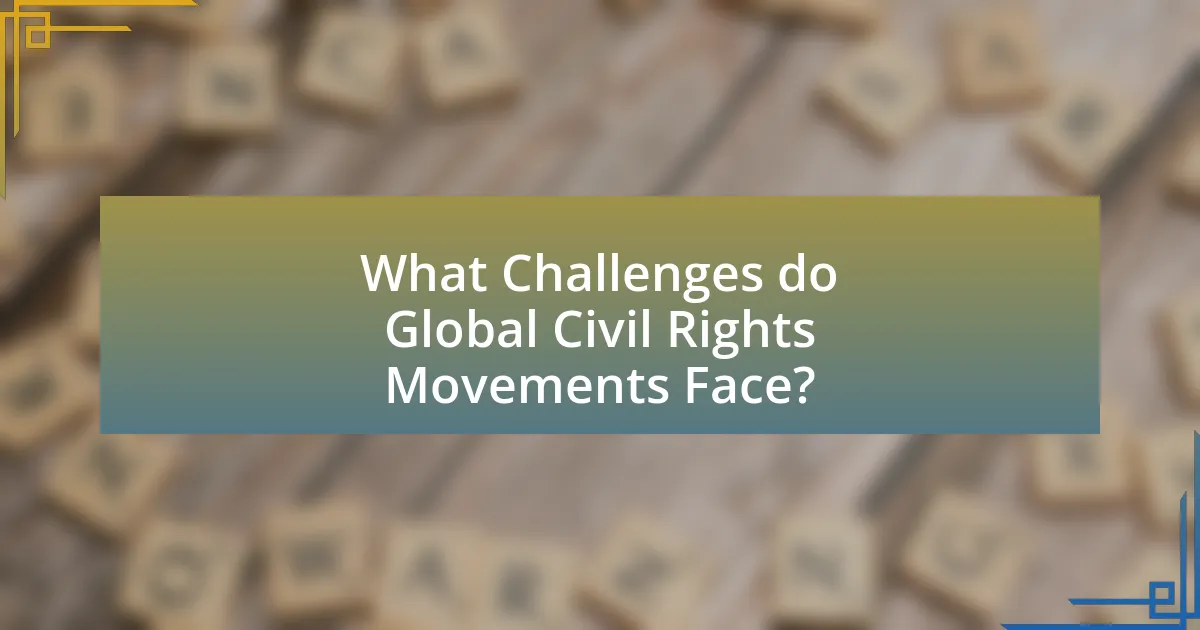
What Challenges do Global Civil Rights Movements Face?
Global civil rights movements face significant challenges including systemic oppression, political resistance, and social fragmentation. Systemic oppression manifests through discriminatory laws and practices that hinder progress, as seen in countries with authoritarian regimes that suppress dissent. Political resistance often comes from governments that view civil rights movements as threats to their authority, leading to crackdowns on protests and activists, exemplified by the violent responses to movements like Black Lives Matter in various regions. Social fragmentation occurs when movements struggle to unify diverse groups with differing priorities, which can dilute their effectiveness and message, as observed in the varying agendas within LGBTQ+ rights movements globally. These challenges collectively impede the advancement of civil rights and highlight the complexities of achieving social justice on a global scale.
What are the common obstacles encountered by these movements?
Common obstacles encountered by global civil rights movements include systemic discrimination, lack of political support, and social apathy. Systemic discrimination manifests through laws and policies that perpetuate inequality, as seen in the Jim Crow laws in the United States, which enforced racial segregation until the Civil Rights Act of 1964. Lack of political support often results in insufficient legislative changes or enforcement of existing laws, exemplified by the slow progress of LGBTQ+ rights in many countries despite advocacy efforts. Social apathy can hinder mobilization, as public indifference to civil rights issues can diminish the urgency and impact of movements, illustrated by the challenges faced by climate justice activists who struggle to gain widespread attention for their cause.
How do governmental responses affect civil rights movements?
Governmental responses significantly influence civil rights movements by either facilitating progress or suppressing activism. For instance, when governments enact legislation that protects civil rights, such as the Civil Rights Act of 1964 in the United States, it empowers movements by providing legal frameworks for equality and justice. Conversely, repressive governmental actions, such as police brutality or restrictive laws, can hinder civil rights movements by instilling fear and discouraging participation, as seen during the protests against apartheid in South Africa, where state violence aimed to quell dissent. Historical evidence shows that supportive governmental policies can lead to successful reforms, while oppressive measures often result in increased resistance and mobilization among activists.
What role does public perception play in the success of these movements?
Public perception is crucial for the success of civil rights movements as it influences public support, media coverage, and political responsiveness. When the general public views a movement favorably, it can lead to increased participation, funding, and advocacy, which are essential for sustaining momentum. For example, the Civil Rights Movement in the United States gained significant traction in the 1960s partly due to widespread media coverage that highlighted injustices faced by African Americans, shaping public opinion and garnering support from various demographics. Additionally, research indicates that movements with positive public perception are more likely to achieve legislative changes, as seen in the legalization of same-sex marriage in multiple countries, where shifting public attitudes played a pivotal role in influencing policymakers.
How can movements overcome these challenges?
Movements can overcome challenges by employing strategic coalition-building, effective communication, and grassroots mobilization. Strategic coalition-building allows movements to unite diverse groups, enhancing their collective strength and resources, as seen in the Civil Rights Movement in the United States, which successfully allied with various organizations to amplify its impact. Effective communication, utilizing social media and traditional platforms, enables movements to disseminate their messages widely and engage supporters, exemplified by the global reach of the Black Lives Matter movement. Grassroots mobilization fosters community involvement and local leadership, empowering individuals to take action, as demonstrated by the Women’s March, which mobilized millions worldwide. These strategies collectively enhance resilience and adaptability, enabling movements to navigate and overcome obstacles.
What strategies have proven effective in addressing opposition?
Effective strategies for addressing opposition in civil rights movements include nonviolent resistance, coalition-building, and strategic communication. Nonviolent resistance, exemplified by figures like Martin Luther King Jr., has historically mobilized public support and highlighted injustices without resorting to violence, as seen during the American Civil Rights Movement. Coalition-building, such as the alliances formed during the anti-apartheid struggle in South Africa, has proven essential in uniting diverse groups to amplify their voices against oppression. Strategic communication, including the use of social media in recent movements like Black Lives Matter, has enabled activists to disseminate their messages widely and counteract misinformation. These strategies have been validated by their successful application in various historical contexts, demonstrating their effectiveness in overcoming opposition.
How can alliances with other organizations strengthen civil rights efforts?
Alliances with other organizations can strengthen civil rights efforts by pooling resources, amplifying voices, and increasing advocacy impact. Collaborative partnerships enable civil rights groups to share expertise, mobilize larger constituencies, and coordinate strategies, which enhances their ability to influence policy and public opinion. For instance, the collaboration between the NAACP and labor unions during the civil rights movement in the United States significantly advanced the fight for racial equality by combining efforts to address both civil rights and economic justice. This synergy not only broadened the reach of their campaigns but also demonstrated the interconnectedness of various social justice issues, thereby fostering a more unified front against discrimination.
What practical lessons can be learned from Global Civil Rights Movements?
Practical lessons learned from Global Civil Rights Movements include the importance of grassroots organizing, the effectiveness of nonviolent resistance, and the necessity of coalition-building across diverse groups. Grassroots organizing empowers communities to mobilize and advocate for their rights, as seen in the Civil Rights Movement in the United States, where local leaders like Martin Luther King Jr. galvanized support for systemic change. Nonviolent resistance has proven effective in achieving social justice, exemplified by Mahatma Gandhi’s approach during India’s struggle for independence, which inspired movements worldwide. Coalition-building is crucial, as demonstrated by the collaboration between various racial and ethnic groups during the anti-apartheid movement in South Africa, which united diverse communities against a common oppressor. These lessons highlight strategies that can be applied to contemporary social justice efforts.
What best practices can activists adopt from successful movements?
Activists can adopt several best practices from successful movements, including strategic coalition-building, effective communication, and grassroots mobilization. Strategic coalition-building allows activists to unite diverse groups, enhancing their collective strength, as seen in the Civil Rights Movement in the United States, where alliances between various organizations amplified their impact. Effective communication, exemplified by the use of social media in recent movements like Black Lives Matter, enables activists to disseminate their messages widely and engage supporters in real-time. Grassroots mobilization, demonstrated by the Women’s March, showcases the power of community organizing to create large-scale participation and visibility for causes. These practices have proven successful in driving change and can be instrumental for current and future activists.
How can individuals contribute to civil rights efforts in their communities?
Individuals can contribute to civil rights efforts in their communities by actively participating in local advocacy groups and initiatives. Engaging in these organizations allows individuals to raise awareness about civil rights issues, mobilize community support, and influence local policies. For instance, grassroots movements have historically played a crucial role in advancing civil rights, as seen in the Civil Rights Movement of the 1960s, where local activists organized protests and voter registration drives that led to significant legislative changes, such as the Voting Rights Act of 1965. By volunteering time, donating resources, or simply educating themselves and others about civil rights, individuals can create a more informed and active community dedicated to promoting equality and justice.

